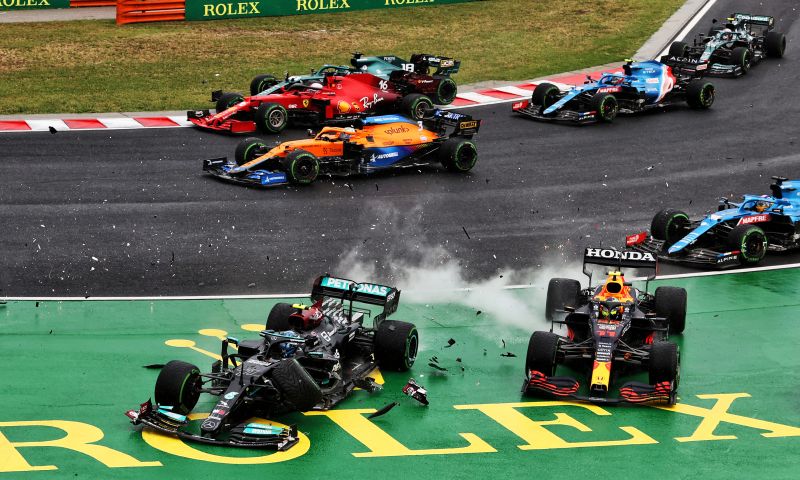Opinion | Criticisms of the current cost cap are incorrect
Column

The FIA announced a cost cap for the 2021 season in late 2019, with the intention of promoting a more level and equitable playing field and securing long term financial stability for some of the lower teams. Initially set to $145 million, the budget cap will be reduced to $140 million for 2022, and then reduced again to $135 million after 2022. However, some figures in the paddock have criticized the budget cap for not considering the cost of crashes.
Red Bull’s Fight in 2021
Thus far in 2021, Mercedes and Red Bull have been locked in a titanic battle for the constructor’s championship, with the former taking the lead after a disappointing Hungarian Grand Prix for the Milton Keynes outfit.
The last two grand prix have been costly for Red Bull. In his column for RedBull.com, team boss Christian Horner stated that Verstappen’s crash with title rival Lewis Hamilton in Silverstone cost the team “1.8 million dollars.”
Red Bull’s issues were further compounded with Valtteri Bottas’s error in the Hungarian Grand Prix, in which the Finn outbraked himself into the first turn, taking Lando Norris and Sergio Perez out of contention and damaging Max Verstappen’s car. Following the race, Horner conceded to F1.com that there was “very little” hope that the team will avoid engine penalties after their string of crashes.
Horner later calls for the FIA to look into the matter, stating “It's brutal under the cost cap. I think it re-affirms that when you have an incident that isn't your fault, that we're paying a significant price for that and that's something that isn't budgeted for. It is something that I think does need to be looked at in greater detail by the FIA.”
Ferrari Agrees
Mattia Binotto echoed similar sentiments following the Hungarian Grand Prix, after Ferrari driver Charles Leclerc was taken out by Aston Martin’s Lance Stroll into the first turn. The Ferrari team principal argues that guilty teams should pay for the damages of other teams.
"I think there is value for discussions in the near future with the other team principals, FIA and F1. Obviously if you're not guilty, having such damage in the budget cap is something which is even more of a consequence now." said Binotto on Autosport.com.
Binotto later continues, “But I think that what we may consider is that if a driver is faulty, the team of the driver should pay at least to the other teams for the damages and repairs. That will make the drivers more responsible.”
Why the Argument Falls Short
The two principals have a right to feel unfairly punished by the cost cap and penalty system. For Horner particularly, Valtteri Bottas’s five-place grid penalty is likely to be more lenient than the engine penalties Perez and Verstappen will take later in the season, not considering the financial damage that will compromise development. However, calls for revisions to the cost cap are illogical for a few reasons.
First and foremost, crashes have always been a part of motorsport. The risk of crashing inherently comes with driving and racing at such close quarters. By forcing teams to pay for crash damages, drivers are far less likely to take risks while overtaking and defending, reducing the excitement and spectacle of the show. Instead, we will see either processions or only “safe” DRS overtakes. Sometimes, one driver or team receives the short end of the stick, as Mercedes did in Imola. In anticipation of such events, the teams should set aside some money for crashes and incidents (although the FIA does provide a little leeway with a force majeure clause).
One might ponder: “What’s stopping a team from intentionally crashing into their rivals and forcing them to take engine penalties and hurt their budget?”
In the past, the stewards have harshly penalized intentional bouts of contact. Consider the 2017 Azerbaijan Grand Prix, where Sebastian Vettel was given a ten second stop-and-go penalty for pulling alongside and driving into Lewis Hamilton under the safety car. At racing speed, any intentional crashes would likely lead to disqualification, if not a harsher penalty. Both Hamilton and Bottas’s crashes were deemed to be unintentional and were penalized as such. In addition, the penalty points system serves as a deterrent to clumsy and reckless driving.
Furthermore, the suggested revisions to the cost cap introduce a slippery slope. Which party will assess the damage, and how will the FIA be able to verify a fair price for the damage? What safeguards will prevent a team from inflating the extent of the damage, as a means of securing a higher payout? What happens in the event of an intra-team crash? These are only a few of the many complications with the proposed revisions.
In conclusion, the cost cap should not introduce any changes to the penalty system, nor should it force teams to pay monetary fines to other teams. Michael Masi has stated time and again that only the incident itself determines the penalty and not the outcome (the cost of the damage). For these reasons, the criticisms of the current cost cap are incorrect.

